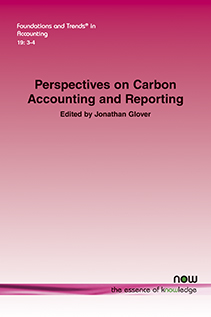Accounting Design: Carbon Accounting with Financial Accounting Principles
By Stephen Penman, Columbia University, USA and Bocconi University, Italy, shp38@gsb.columbia.edu
Abstract
Carbon accounting can be designed in the image of financial accounting, reporting balance sheets and income statements under the same accounting principles. The parallel carbon accounting conveys similar information to financial reporting, but with the unit of account in tons of CO2 rather than money. With similar properties, carbon accounting statements and financial accounting statements are mutually referential; “carbon statement analysis” mirrors financial statement analysis, providing the “double materiality” feature for sustainability reporting more generally.
Perspectives on Carbon Accounting and Reporting
Double-entry bookkeeping revolutionized financial accountability centuries ago, and today, its principles are shaping a new frontier—carbon accounting. The articles in this issue on Perspectives on Carbon Accounting and Reporting were contributed by leading academic and practitioner experts on carbon accounting. The authors highlight key challenges, including responsibility for Scope 3 emissions, reliance on third-party estimates, the allocation of emissions to products, the importance of integrating carbon accounting with traditional financial and managerial accounting systems, and the need for commonly accepted carbon accounting standards.

Companion
Foundations and Trends® in Accounting, Volume 19, Issue 3-4 Special Issue: Perspectives on Carbon Accounting and Reporting
See the other articles that are also part of this special issue.